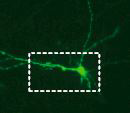Archived Content
The National Institute of Mental Health archives materials that are over 4 years old and no longer being updated. The content on this page is provided for historical reference purposes only and may not reflect current knowledge or information.
Streamlined Method Offers Shortcut to Generating Neurons for Discovery
Newly Named Nobel Laureate Led NIMH-funded Study
• Science Update
An NIMH-funded research team led by newly-named Nobel Laureate Thomas Südhof, M.D. , of Stanford University, has found a shortcut to rapidly convert induced human stem cells into healthy neurons for “disease-in-a-dish” discovery – and, ultimately, personalized medicine. The breakthrough method opens the way to large-scale production of viable, induced human neurons for studying causes of brain disorders, screening potential treatments and developing regenerative therapies. For example, skin cells from a patient with schizophrenia can be first induced to revert to stem cells and then grown into neurons for study of his or her unique illness.
Previous methods of coaxing such induced stem cells to differentiate into neurons were comparatively slow and inefficient -- resulting in hobbled neurons with diminished capacity to form connections, or synapses. By contrast, the new method readily yields functional, pure neurons in less than 2 weeks -- with nearly 100 percent success. The human neurons assumed working roles in neuronal circuitry when transplanted into mouse brain. Cell lines were consistently reproducible. The approach allows for rapid turnaround in experiments and may hold potential for unprecedented mechanistic and translational studies, say the researchers. Unlike complicated previous techniques, the new method is relatively simple -- based on forced expression of a single transcription factor , called Ngn2.
Südhof won the 2013 Nobel Prize in Physiology or Medicine for earlier work.

The rapidly induced human neurons became functionally integrated into circuitry when transplanted into mouse brain.
Source: Thomas Südhof, M.D., Stanford University
Reference
Rapid single-step induction of functional neurons from human pluripotent stem cells . Zhang Y, Pak C, Han Y, Ahlenius H, Zhang Z, Chanda S, Marro S, Patzke C, Acuna C, Covy J, Xu W, Yang N, Danko T, Chen L, Wernig M, Südhof TC. Neuron. 2013 Jun 5;78(5):785-98. Doi 10.1016/j.neuron.2013.05.029. PMID:23764284.
Grants: Induced Neuronal Cells: A Novel Approach to Study Neuropsychiatric Diseases
